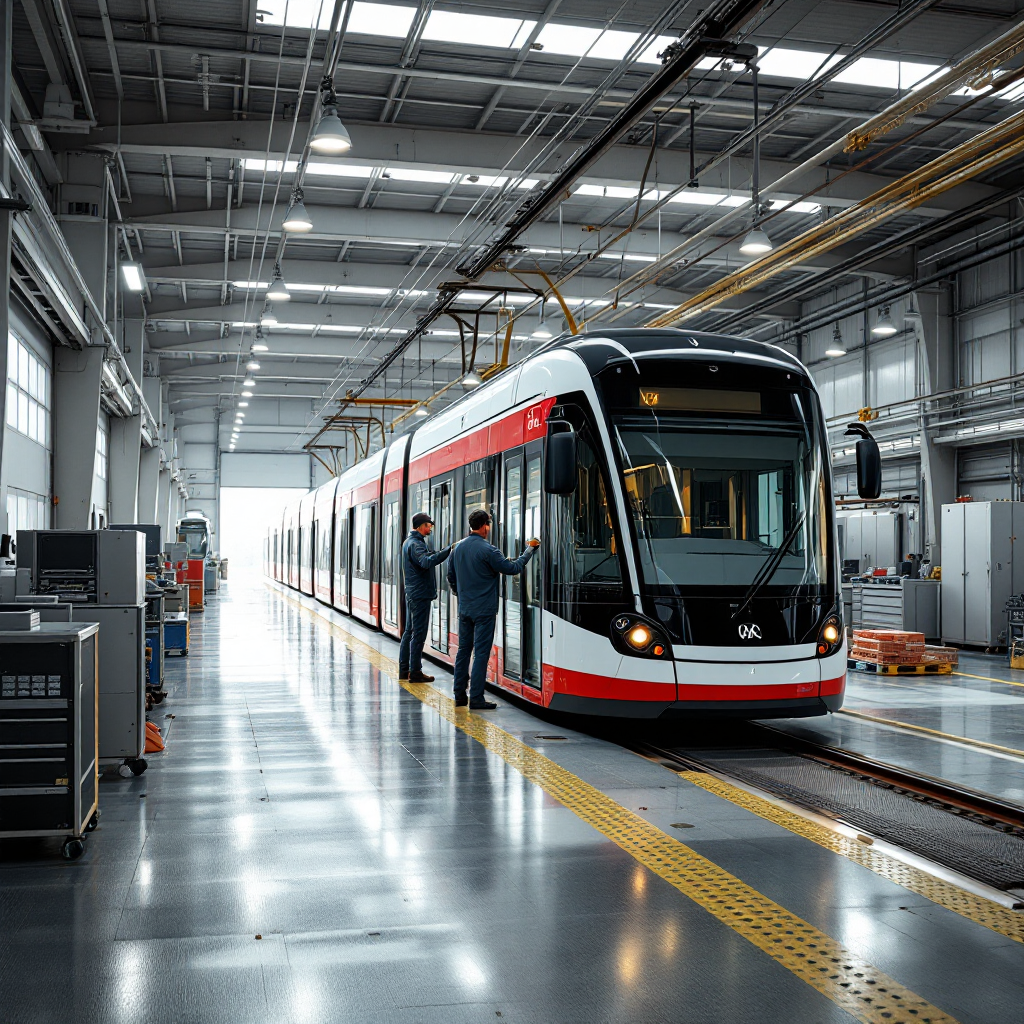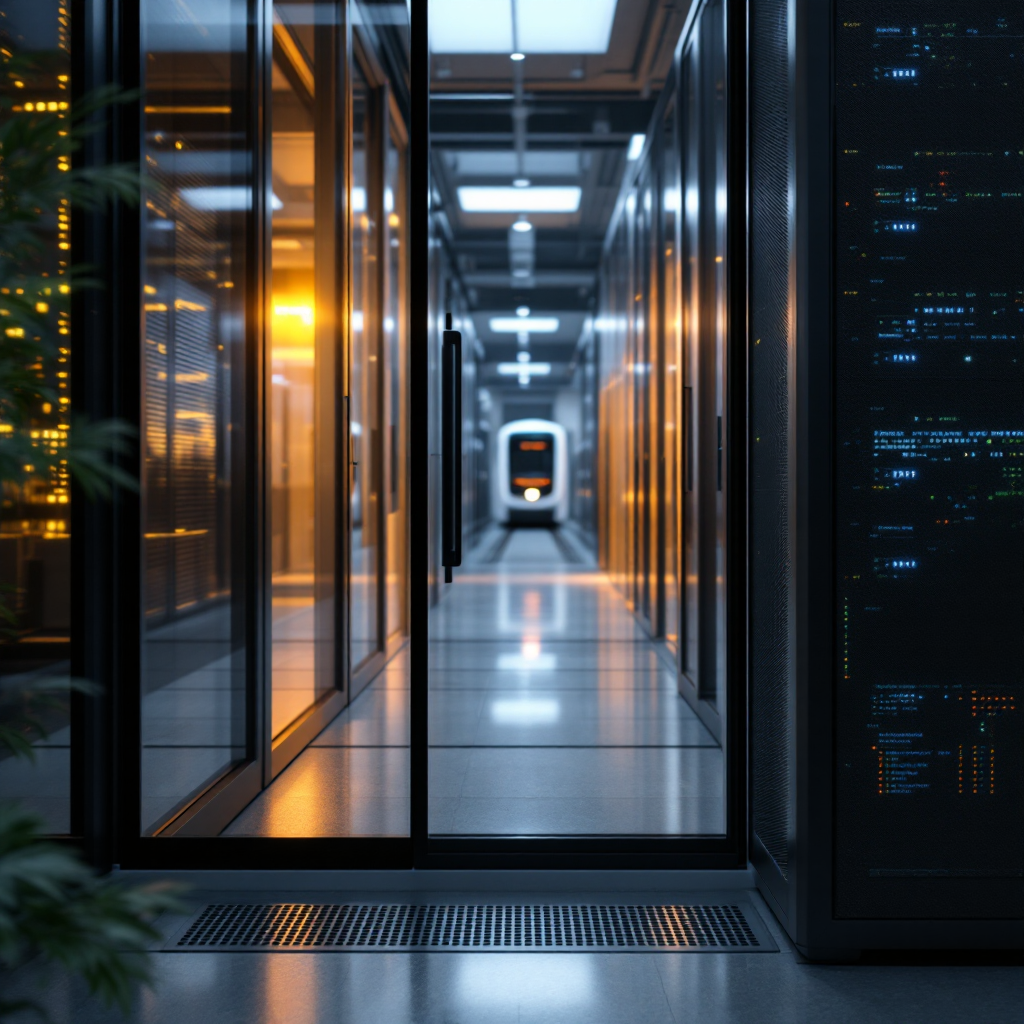tram infrastructure Challenges and the Role of ai
Urban tram infrastructure faces growing pressure from higher passenger counts, denser networks, and expanding CCTV coverage. Also, operators must manage huge volumes of video footage, which makes manual review impossible at scale. Next, track obstructions and equipment faults appear suddenly, and they can cause service disruption if not addressed fast. Therefore, teams need tools that enable rapid identification of issues and prioritise repairs. AI steps in to scan footage, flag hazards, and provide actionable insight to maintenance crews.
Key infrastructure risks include objects on rails, structural wear, and failures of signaling or overhead lines. For example, track obstructions create immediate safety risks for passengers and vehicles. Also, structural wear develops slowly but causes long-term reliability loss. Operators must balance routine inspections with data from cameras to improve scheduling and reduce emergency repairs. Using artificial intelligence to collate visual evidence with historical maintenance records helps predict failures before they impact service.
Video data volumes are rising rapidly in public transport. A recent survey on video big data analytics explains how AI helps handle large streams and extract operational insight in real time (A Survey on Video Big Data Analytics). Also, market research shows the AI video market scaling fast, which reflects demand for smarter transit systems (AI Video Market Report). Consequently, transit authorities invest in edge processing and automated detection to ensure continuity of service.
Visionplatform.ai treats existing CCTV as a sensor network, so operators can reuse their VMS footage and avoid vendor lock-in. Next, this approach reduces cloud dependencies and supports EU AI Act readiness by keeping data on-prem. Also, it enables operators to turn camera streams into structured events for dashboards or maintenance systems. Finally, the result is improved reliability, faster incident response, and a safer environment for passengers and staff.
ai-powered video analytics and real-time video analysis in tram depots
Core components of a depot monitoring solution include high-quality cameras, edge processing hardware, and machine learning models that run close to the source. Also, a typical deployment uses surveillance cameras connected to an edge server, which pre-processes and analyses frames. Then, detected events stream as concise messages to operator dashboards or maintenance platforms. This pipeline supports real-time decisions and reduces the need to transfer raw video to remote cloud services.
Edge AI reduces latency and improves scalability. For instance, Visionplatform.ai can deploy on NVIDIA Jetson or GPU servers to process dozens of streams locally. Also, an on-prem strategy keeps data within the operator environment, which helps with GDPR and EU AI Act compliance. A practical setup captures, preprocesses, analyses, and issues an alert in seconds. This “capture-to-action” flow ensures that depot teams see critical events immediately and can act fast to protect staff and equipment.

Examples of real-time video analysis include automatic detection of track intrusions, wheel flats, or loose equipment beneath vehicles. Also, door malfunctions and pantograph irregularities surface from continuous visual inspection. Real-time detections feed maintenance ticketing and optimise inspection routes. In addition, AI models can classify asset conditions and prioritise work by severity, which increases operational efficiency.
Facilities that reuse VMS footage get better outcomes. For example, integrating with Milestone XProtect simplifies video ingestion and event routing; operators can find more details at the Milestone integration page for rail operators Milestone XProtect AI for rail operators. Also, combining edge processing with cloud analytics provides flexibility for scaling to multiple depots while keeping most processing local. Therefore, depots benefit from faster turnaround on inspections, lower false alarms, and improved uptime for the fleet.
AI vision within minutes?
With our no-code platform you can just focus on your data, we’ll do the rest
using ai video analytics to monitor rider safety and access control
Transit hubs and tram stops require continuous attention to protect passengers and maintain smooth flows. Also, AI systems can detect crowding, unattended items, and suspicious behaviour at stops. using ai video analytics helps identify trespassers and potential violations before they escalate. For instance, automated detection of people on tracks can trigger an immediate alert to the operator and local signage to stop approaching trams.
Systems can integrate with access control to improve depot security. Next, camera-based detections at gates and turnstiles feed authorization systems, which automates gate locking or staff notifications on a breach. Also, combining ANPR/LPR with badge checks ensures only authorised vehicles and personnel enter sensitive areas. Visionplatform.ai focuses on on-prem detection and publishes structured events to MQTT, so security and operations teams get the same alerts for faster coordination.
AI video also helps with crowd and queue management across transport nodes. For example, platform crowd analytics and trespass detection solutions offer actionable insights for staff allocation and traffic management; see the crowd management page for related methods platform crowd management with cameras. Also, detection models can flag loitering, vandalism, and misuse near tram stops. When an abnormal behaviour pattern emerges, the system sends an alert so an operator can assess and respond. This reduces risk to riders and staff, and supports safer station environments.
Moreover, combining visual detection with other sensors reduces false positives. For instance, radar or access logs can confirm a detection before an alert reaches an operator. Also, archiving detections with audit logs supports post-incident review and compliance checks. Ultimately, the goal is to automate routine responses while preserving operator oversight for critical decisions.
artificial intelligence video and technology for proactive tram maintenance
Proactive maintenance relies on timely detection of defects and intelligent scheduling. AI inspects visual indicators such as wheel flats, brake wear, and pantograph damage from routine video feeds. Also, models flag door misalignment and clearance issues during station stops. By detecting subtle visual cues early, operators can schedule targeted inspections and avoid expensive unplanned downtime.
Deep learning models trained on site-specific footage improve detection accuracy. Also, Visionplatform.ai allows teams to retrain or extend models with their own VMS footage, which reduces false detections and fits depot-specific needs. This adaptable approach transforms cameras into practical sensors that feed operational maintenance systems. Additionally, detected severity levels can convert into prioritized work orders, which optimises technician time and lowers parts inventory costs.
Field studies indicate cost savings when maintenance shifts from reactive to predictive. For example, industry analysts predict strong growth in AI video markets, reflecting wider adoption in transport maintenance (AI Video Analytics Market). Also, big data analytics supports correlation of visual defects with fleet telemetry and historical repair logs (Big Data Analytics and AI). These data-driven insights help decide whether a defect requires immediate attention or scheduled work.
To automate workflows, operators can publish visual event data to maintenance platforms and SCADA systems. Also, integration with ticketing systems ensures that an operator sees actionable insights alongside context such as tram ID and last maintenance. This streamlines inspections and improves fleet reliability. Finally, the net effect is fewer service interruptions, lower maintenance costs, and improved passenger experience.
AI vision within minutes?
With our no-code platform you can just focus on your data, we’ll do the rest
privacy and video analytics: ensuring data compliance in tram systems
Privacy and compliance must guide deployment of AI in public transport. Also, EU regulations and local laws require careful handling of personal data from cameras. Therefore, operators adopt GDPR-aligned retention policies and anonymisation techniques, such as face blurring and metadata-only event logging. Visionplatform.ai emphasises on-prem processing and auditable event logs, which support EU AI Act readiness and keep customer datasets private.

Secure storage and encryption protect footage and event records. Also, access logs and role-based permissions ensure that only authorised staff can review sensitive footage. An audit trail that records who viewed footage and when is essential for compliance with oversight requirements. In addition, minimising transfers to cloud-based services reduces exposure and supports operator control over data.
Balancing operational value with passenger privacy involves clear policies and technical safeguards. Also, anonymised detection events can keep dashboards useful while protecting identities. For example, publishing only structured events and bounding boxes instead of raw footage reduces misuse risk. Moreover, explicit retention windows limit how long footage remains online, and automated deletion enforces policy. Finally, combining on-prem models with transparent configuration makes audit processes straightforward for compliance teams.
Future Trends in ai video analytics, ai video and artificial intelligence for tram infrastructure
Edge-AI and 5G will enable ultra-low-latency systems for tram networks. Also, edge processing reduces bandwidth and supports continuous live monitoring without sending raw footage to remote servers. Next, fusion of video analytics with LiDAR and sensor networks promises richer situational awareness. For example, multimodal datasets are improving environment perception for rail vehicles (MRSI multimodal dataset).
Semi-autonomous tram operation depends on robust detections and redundant sensing. Also, combining computer vision with radar and track sensors will enable safer automated braking and obstacle avoidance. Furthermore, digital twins fed by event streams create virtual replicas of depots and lines, which help with planning and predictive maintenance. Researchers expect continued growth in AI video markets, which underlines the trend toward integrated AI-driven operations (AI Video Market Report).
City planners and operators will adopt more cost-effective edge solutions that scale. Also, Visionplatform.ai’s model strategy—on-site training, flexible deployment, and MQTT event streaming—helps transit organisations deploy practical systems that respect privacy and compliance. Finally, the path forward includes better fusion across sensor types, improved model transparency, and stronger links between video detections and business systems so that cameras truly act as sensors for operational teams.
FAQ
How does AI help detect objects on tram tracks?
AI models analyse frames from cameras to spot foreign objects, animals, or people on tracks. Then, they send an alert to the operator with location and confidence, enabling fast response.
Can existing CCTV be used for depot analytics?
Yes. Systems like Visionplatform.ai reuse VMS footage and existing cameras to deliver detections without wholesale camera replacement. This approach reduces cost and speeds deployment.
What is the role of edge AI in tram monitoring?
Edge AI processes video close to cameras, which reduces latency and bandwidth. It also keeps data local, which helps with GDPR and EU AI Act compliance.
How are passenger privacy concerns addressed?
Operators use anonymisation, retention limits, and encrypted storage to protect passenger data. Also, audit logs and role-based access ensure only authorised staff can view sensitive footage.
Does AI reduce maintenance costs for trams?
Yes. Predictive detections of wheel flats or pantograph wear let teams schedule inspections and avoid emergency repairs. Over time, this lowers parts and labour costs.
Can video analytics integrate with depot access control?
Absolutely. Camera detections can link to gate systems and turnstiles to prevent breaches. Integration provides coordinated security responses and audit trails.
What kinds of sensors complement video?
LiDAR, radar, and axle counters complement cameras by offering depth and movement data. Fusion improves detection reliability and reduces false alerts.
How fast can systems issue an alert after detection?
With edge processing, systems can issue an alert in seconds. This real-time capability helps operators act before incidents escalate.
Are there standards for storing video data?
Yes. GDPR and local laws dictate retention, access, and anonymisation rules. On-prem deployments and transparent logs simplify compliance audits.
Where can I learn about solutions for rail trespass detection?
Resources on platform crowd and trespass detection show practical deployments and integrations. See the rail-focused pages for examples and technical details trespass detection on railway tracks, and explore train station analytics for related use cases AI video analytics for train stations. Additionally, consider edge safety detection patterns at platform edge safety detection AI.

